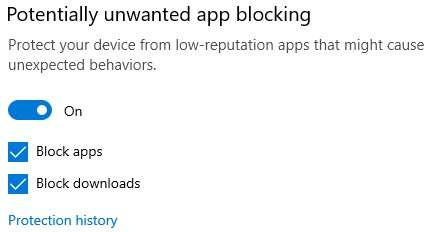Note: This question is part of a series of questions that present the same scenario. Each question in the series contains a unique solution that might meet the stated goals. Some question sets might have more than one correct solution, while others might not have a correct solution.
After you answer a question in this section, you will NOT be able to return to it. As a result, these questions will not appear in the review screen.
You have a server named Server1 that runs Windows Server.
You need to ensure that only specific applications can modify the data in protected folders on Server1.
Solution: From App & browser control, you configure Reputation-based protection.
Does this meet the goal?
Answer(s): B
Explanation:
Instead: From Virus & threat protection, you configure Controlled folder access.
Incorrect:
* Reputation-based protection
Protect your PC from potentially unwanted applications.
Potentially unwanted applications (PUA) are a category of software that can cause your machine to run slowly, display unexpected ads, or at worst, install other software which may be more harmful or annoying.
Windows Security has reputation-based protection that can help protect your PC from potentially unwanted applications. Potentially unwanted app blocking was first introduced in the Windows 10 May 2020 update and is turned on by default for enterprise customers, but off by default for consumers.
How do I configure it?
To configure potentially unwanted app blocking go to Start > Settings > Update & Security > Windows Security > App & browser control > Reputation-based protection settings.
There you'll find a control that lets you turn potentially unwanted app blocking off, and select if you want to block apps, downloads, or both.

We recommend that you leave this feature on, and that you enable both block apps and block downloads.
Block apps will detect PUA that you've already downloaded or installed, so if you're using a different browser Windows Security can still detect PUA after you've downloaded it.
Block downloads looks for PUA as it's being downloaded, but it only works with the new Microsoft Edge browser.
Reference:
https://docs.microsoft.com/en-us/microsoft-365/security/defender-endpoint/customize-controlled- folders?view=o365-worldwide https://support.microsoft.com/en-us/windows/protect-your-pc-from-potentially-unwanted-applications-c7668a25- 174e-3b78-0191-faf0607f7a6e